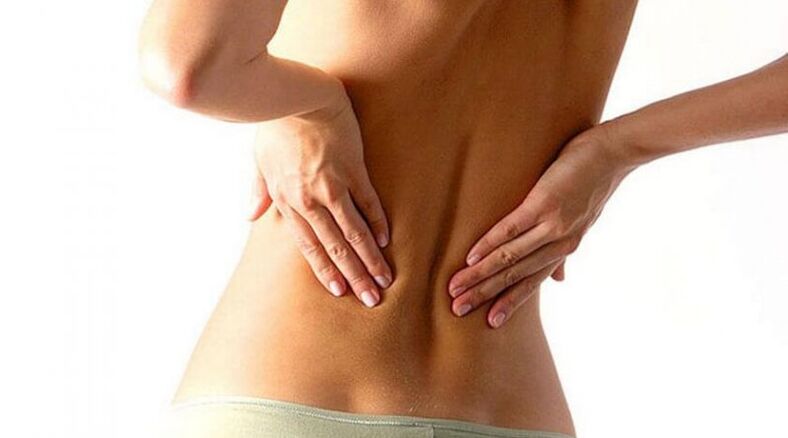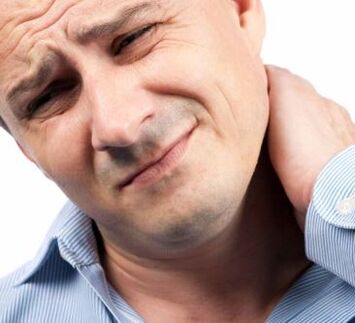
Spinal osteochondrosis is a disease that affects the cartilaginous structures that make up the intervertebral discs in the human body. These discs provide mobility to the spine, allowing us to move and be flexible.
Osteochondrosis disrupts the structure of such discs, changes their structure. Since the process of destruction of these disks is irreversible, it is impossible to cure the disease. However, with proper treatment, you can stop the progression of the disease, slow it down, and gain time to maintain the mobility of the spine.
If the disease is not stopped in time, after the intervertebral discs are destroyed, the vertebrae themselves begin to destroy.
It is important!Ignoring osteochondrosis inevitably leads to complications, forced reduction of physical activity, deterioration of quality of life and sometimes even disability.
One of the most common complications of osteochondrosis is osteophyte. This is the name of the bony growths that appear along the edges of the vertebrae. The appearance of such growth can be provoked by long-term stress on the spine or an unstable spinal movement segment.
Causes and symptoms of osteochondrosis
Experts point to improper distribution of the load on the spine as the main reason for the development of osteochondrosis.
However, the process is hypothermia of a certain part of the body or the whole body, excessive physical stress on the back in general and the spine in particular, including damage to the spine (impacts on the spine, sharp turns, shocks and any physical impact that can cause displacement of the vertebra).

Osteochondrosis has many minor causes. Typically, a person with such a diagnosis can identify from this list 7-10 reasons that lead to the development of the disease in his particular case.
So, below are the small but important reasons that lead to the destruction of intervertebral discs. In order not to find out what osteochondrosis is, you should avoid:
- slouching and poor posture (they cause curvature of the spine)
- weak back muscles (so all the load falls on the spine)
- to be in a constant state of anxiety
- extreme physical activity associated with lifting and carrying heavy objects, strength sports
- spinal injuries
- Malnutrition or overnutrition causing metabolic disorders
- overweight
- permanent sitting
- stress
- hormonal disorders
- bad heredity
- don't get old
As you can see, there are quite a few reasons. The symptoms of this disease are also different. Osteochondrosis manifests itself differently in different people, but the following symptoms are generally observed during osteochondrosis:
- severe back pain
- numbness in the arms or legs (sometimes both at the same time)
- headaches turn into migraines
- aches and pains in the neck and limbs
- dizziness, colored spots before the eyes, sometimes fainting
- cold hands and feet
- characteristic pain in the chest (like intercostal neuralgia) and in the heart region
- painful movements
The formation of osteochondrosis
It is interesting: some doctors believe that osteochondrosis is not a pathology, but a natural change in the human body.

One way or another, it is difficult to find a long liver who has never suffered from back pain in his life. According to various sources, osteochondrosis affects 40-80% of all people on earth.
Typically, a person notices the first signs of osteochondrosis between the ages of 35 and 50. It has a lot to do with his lifestyle.
If in some people, due to weak heredity, the first symptoms appear in adolescence, for most people, symptoms that appear after 50 are considered the norm.
This is due to the fact that by the age of 45, the human body stops accumulating water in the intervertebral discs, and the level of collagen, necessary for the health of the joints, inevitably begins to decrease.
In some people, the intervertebral discs can even become compressed. This causes pain and is called sciatica.
Stages of osteochondrosis
There are 4 main stages of osteochondrosis development.
- It all starts with dehydration of the nucleus pulposus. Due to the decrease in the height of the intervertebral disc, the fibrous ring is covered with cracks. At this stage, it is difficult to distinguish pathology, because all changes occur in the intervertebral disc. No back and neck pain yet.
- As the height of the intervertebral disc decreases, sagging of the muscles and ligaments occurs. This is due to the convergence of the attachment points of muscles and ligaments. Initially, they are attached to two adjacent vertebrae, but if the distance between these vertebrae decreases, it cannot affect the muscle tissue.
- The third stage is characterized by pronounced changes. Prolapses, as well as a phenomenon such as disc protrusion, occur. Protrusion precedes the occurrence of an intervertebral disc herniation. As a rule, the development of the disease can be stopped at this stage, because the fibrous ring is still intact, and recovery can still be attempted. But since the protrusion does not cause pain, there are few people who consult a doctor at this stage.
- At the last stage, the fibrous ring is broken. Where the disc is destroyed, the body moves to counteract the excessive mobility of the vertebrae, and osteophytes appear on the vertebrae.
Diagnostics
Before starting the treatment of osteochondrosis, it is necessary to make a diagnosis and determine at what stage the disease is currently developing.
It is important!The diagnosis of osteochondrosis is impossible without first taking an anamnesis.
If you notice any signs of osteochondrosis, listen carefully to your body.

The more you tell your doctor about your feelings, the faster and more accurately he can make a diagnosis and start the right treatment. Do not think that there will be a lot of information: ask your loved ones if there are any manifestations of this disease. Family history will help determine the cause of osteochondrosis more precisely.
After the doctor collects your medical history and concludes from your complaints that it is most likely osteochondrosis, he will suggest you to undergo an X-ray examination.
If for some reason this type of examination is not suitable for you, your doctor may also suggest an MRI or CT scan. However, since these examinations are not mandatory under the compulsory health insurance program, you will have to pay for them yourself. Consider their high price.
Myelography is used as a last resort to diagnose osteochondrosis. This is a painful and dangerous procedure in which the doctor injects dye directly into the spinal canal.
How is osteochondrosis treated?
Currently, the treatment of osteochondrosis is applied in many clinics. Some procedures have a positive effect, while others only relieve pain. If you choose one of the treatment methods, discuss this method with your doctor before starting the treatment of osteochondrosis.
Now the most popular procedures are:
- magnetic puncture effect
- effect of pharmacopuncture
- reflexology with needles
- vacuum effect
- electrical stimulation
- manual therapy
Many of these procedures are not a cure for osteochondrosis, but a treatment for some of the symptoms of osteochondrosis. Therefore, the doctor should coordinate the procedures. This is especially true for patients diagnosed with cervical osteochondrosis.
The point is that osteochondrosis developed in the cervical spine is characterized by symptoms such as numbness of arms and legs. And this is no accident. The fact is that many nerve endings are concentrated in the neck area. And in this case, the wrong treatment can turn your cervical osteochondrosis into a full-fledged disability.
Surgical treatment
Spine surgery is such a serious operation that it is prescribed very carefully and only if osteochondrosis is complicated by a herniated disc. Such operations are not urgent, they are always carried out only as planned. Before the operation, you will have to undergo a large number of examinations and pass many tests.
Such operations are prescribed only when the doctor sees no other way out for treatment and understands that the quality of life of a person will deteriorate significantly without surgery. Before surgery, doctors will try to provide pain relief and supportive care.
Narcotics
Medicines to treat this condition are mainly designed to reduce pain and increase collagen levels in the body.

However, it is important to remember that collagen and other nutrients for cartilage are not only absorbed by the spine, but by the entire body. Thus, the effectiveness of such drugs is not very high.
Ointments that doctors recommend to use for osteochondrosis are also mainly designed to relieve pain during exacerbations.
Unfortunately, if you have osteochondrosis, you will likely need maintenance therapy for the rest of your life. That is, your back will hurt from time to time, you will not be able to exert yourself too much physically, especially you will avoid lifting heavy objects, putting stress on your back and spine.
Exacerbation of osteochondrosis
Exacerbation of this disease can be caused by high physical strength in the back muscles. Also, osteochondrosis can worsen due to colds or infections, hypothermia, stress, pregnancy and hormonal changes. Gaining weight will also cause back pain.
Prevention
As a preventive measure, doctors offer many patients physical exercises specially designed for people suffering from this disease.

If your doctor has prescribed you a course of exercise therapy, you should check with him exactly what exercises are allowed for you. Exercises will help keep your muscle corset in tone, which will reduce the load on the spine. In addition, these exercises will greatly help those who lead a sedentary lifestyle.
Also, you may be prescribed a massage for preventive purposes. Depending on which part of the spine you develop osteochondrosis, the massage therapist will work in this area. This will not only relieve pain, but also help relax the muscles. Massage in combination with exercise therapy gives good results.
Try to avoid stress on the spine, do not lift heavy objects. Dress warmly if possible because. . . any hypothermia can cause exacerbation of osteochondrosis.
It is quite possible to live a full life with this disease, remember to take care of your body and take care of yourself.


























